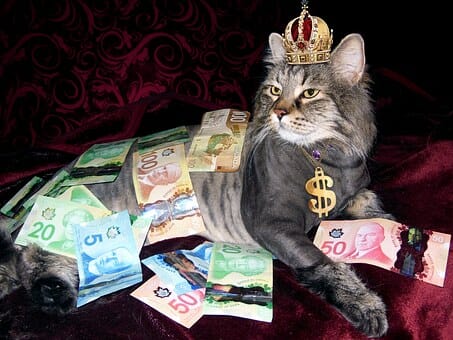Gross and Net Profit
In our last blog we looked at profit and saw that it is more Important than Sales. This week we will go one step further and look at two types of profit, Gross profit and Net Profit. These are profits you would typically encounter in your business.
Profit types
As we said earlier, the main profits are called gross profit and net profit.
Let’s get back to the heart of the topic, what does gross and net profit mean, what’s that all about? Here’s an easy way to look at it
Gross profit
For example, Serena sells lemonade outside her house at 50 pence a cup. Now if she sells a hundred of those, then she ends up with £50. That £50 are her sales, but it’s not her profit. Serena needs to spend £10 first to use for cups, lemons, and sugar, she reckons thinks this will be enough to make a hundred cups all in all. This means that she gets a £40 profit. That £40 is her gross profit.
Let’s look at other examples. If you are a retailer business, the difference between the cost of buying stock and selling it is gross profit. Where your business is a food business, the gap between the cost of making a meal and selling it is gross profit. If your business is a training business, the difference between course fees and room hire and materials is gross profit. For a manufacturing business the product selling price minus the cost of making it is the gross profit.
For the record, gross profit is also called gross margin, and the costs of buying sugar, lemons, stock, room hire etc is called cost of sales.
Net profit
Serena, our lemonade seller above made a gross profit of £40. Life would be wonderful for Serena if she could keep all of that for herself. However, business life is not as comfortable as that and there are certain costs Serena had over and above the costs of cups, lemons, and sugar.
There are the costs of printing flyers, paying rent on her lemonade stand, and wages to her friend Joanna. Joanna worked on the stall when Serena needed a break. The cost of all this is £30, this leaves Serena with a net profit of £10.
Bear in mind that Net Profit can also be called operating profit, EBIT or PBIT. Wow, let’s convert those acronyms to words, EBIT stands for Earnings Before Interest and Tax, PBIT is Profit Before Interest and Tax. In case you are wondering Earnings is just another word for profit in our International Universe.
Gross profit and break even
Think of gross profit of profit droplets coming into your business every time you sell something. When you sell a meal, a product, or deliver a training session those gross profit droplets build up. Your business target is for your gross profit to cover all your support costs.
For Serena, her support costs of £30 were for printing flyers, renting her lemonade stand, and wages to her friend Joanna. Additional examples of support costs include, business utilities, printing and stationery, Insurance, Repairs, you get the picture.
Take a leap of imagination. As you sell things your gross profit builds up in a numbers tank. The first marked line in your tank are your support costs. When gross profit hits that first level, you have covered all your support costs, and hey presto you have break even.
Let’s add some numbers to this. Serena makes a gross profit of 40 pence per cup, her support costs are £30. If Serena sells 75 cups of lemonade she breaks even. When she sells cup number 76, that extra cup gives her 40 pence of, cup 77 leaves her with a total of 80 pence of net profit.
For the record support costs are also called overheads, running costs, expenditure, operating costs, expenses.
Things to consider
Your business needs to make profit if you want to survive and thrive and be more than a hobby business. Where Serena wants to make more profit there’s a combo of things, she can look at changing. For example, charge more than 50 pence per cup, spend less on cups, lemons and sugar, or cut down on wages and advertising.
It is easier, (not easy) to control and influence cost of sales, such as lemons, room hire, materials. It is less easy to control support costs like Insurance, salaries and wages, and business rent.
Word of warning
Numbers, like gross and net profit, inform your business decisions, not always dictate them. For example, cheaper lemons might mean poorer quality lemonade being made and her customers buy less and complain; more waste since the lemons are a bit manky. In a worst case scenario bankruptcy could be looming
Where Serena increase the selling price of lemonade beyond 50 pence, she may end up selling fewer cups, but makes a bigger total gross profit. In contrast, Serena reducing the selling price of lemonade below 50 pence could mean selling more cups of lemonade. If the numbers work out she could end up making more gross profit.
There’s loads more business insight and application we can do once we get our heads around gross and net profit. Pricing strategies, decisions on outsourcing, dropping products, looking evaluating business opportunities, sacking clients, are just a few examples of the application of gross and net profit.
We’ll look at these in future blogs.
Conclusion
If you want your business to carry on, survive then and thrive learn to understand and keep an eye on your gross and profit. If you don’t do this then you are missing a trick, and your business can suffer and lose money
Get in touch to see where we can help you get to grips with your business profits, understand your numbers and more !
Pro Active Resolutions
The Numbers Crew – Here to help you!
